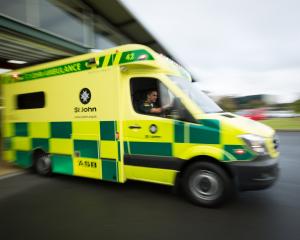
A suspected Chinese spy balloon hit headlines and heightened diplomatic tensions when it was shot down by a Sidewinder missile about six nautical miles off the Carolina Coast, in United States territorial waters, on February 4.
American officials claimed the balloon was being used to spy on its military installations, while the Chinese Government said it was a civilian weather balloon which was blown off course.
The Defence Force, in response to an Official Information Act request, said it did not have the capability to intercept or bring down spy balloons or reconnaissance aircraft in New Zealand airspace.
Details on specific surveillance capabilities were withheld, due to the risk to national security or relationships with other countries, the response said.
A former intelligence and defence policy analyst, 36th-Parallel Assessments director Paul Buchanan said the New Zealand Army did not have any weapons which could reach the altitude of a surveillance balloon, which flew at about 50,000ft.
The Royal New Zealand Air Force did not have that capability either, as none of its aircraft could reach those altitudes, he said.
While Royal New Zealand Navy frigates had air defence capabilities, they could not reach that height either.
The only option would be to ask Australia to intercede with a F-18 fighter jet, or a similar aircraft.
Balloons were the optimal surveillance tool for some tasks as they were equipped with rudimentary controls and sophisticated sensors, and could loiter above a target.
They gave higher definition images than satellites while spy planes were more suited to ground scan-type reconnaissance because they moved so fast, he said.
In the case of the balloon shot down off Carolina, Dr Buchanan believed the US had been watching it since it was launched and it did appear to have been swept off course.
He believed New Zealand would not necessarily know if there was a similar balloon in its airspace.
Commercial airspace ended at about 40,000ft and while such aircraft might identify a high-altitude balloon, they had a low radar signature because they tended to be made of fabric with a football-sized senior suite hanging underneath.
He believed such a balloon would most likely be located from space or by an amateur astronomer.
"I don’t think the military is spending much time looking at objects over 50,000ft," he said.
He said the chances of New Zealand being spied on by such balloons was "more than zero", as New Zealand was a member of the Five Eyes intelligence-sharing arrangement.
A Defence Force spokeswoman said there were no records of incursions by foreign aircraft into New Zealand's airspace from 1990 to 2019.
Information outside those dates was not readily retrievable without more time, she said.












